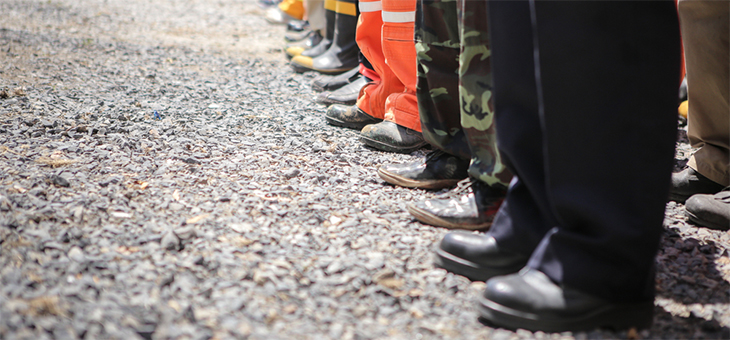Jamie Ranse, Griffith University
The emergency response to Victoria’s COVID-19 crisis has been ramped up today with AUSMAT teams now working alongside defence force and hospital nurses in aged care homes.
This comes as the total number of active COVID-19 cases linked to aged care in Victoria is now at 913.
Federal health minister Greg Hunt recently said AUSMAT, or Australian medical assistance teams, are:
[…] the best of the best. They are the SAS of the medical world.
But what is an AUSMAT? What can they do? And what do we need to think about when deploying them?
What is a medical assistance team?
A medical assistance team is a group of doctors, nurses and/or paramedics who provide clinical care and health support during a health crisis, as part of a recognised organisation.
Logistics, environmental health and other personnel often support these clinical teams.
Medical assistance teams contribute to a coordinated health response in an attempt to restore and/or maintain the health capacity of a community affected by disaster or public health emergency.
In Australia, a medical assistance team may be a civilian government team (such as AUSMAT), non-government organisations (such as Disaster Relief Australia or St John Ambulance Australia), the Australian Defence Force, or a combination of these.
While an AUSMAT is usually deployed internationally, teams were deployed in Australia during last summer’s bushfires, to help with evacuations from China to Christmas Island at the start of the pandemic, and in April to support COVID-19 efforts in northwest Tasmania.
Who’s in an AUSMAT?
Healthcare professionals in an AUSMAT usually work at hospitals, health services or ambulance services in states and territories across Australia.
When required, they are released from their local duties to be deployed as part of an AUSMAT response.
They are often highly experienced and leaders in their disciplines. Members undertake additional education and training to work in disaster environments and to manage the health response.
They are also highly regarded. AUSMAT was one of the first medical assistance teams worldwide to be endorsed by the World Health Organization.
How have they been deployed internationally?
AUSMATs were set up after the 2002 Bali bombings, then used after the 2004 Indian Ocean tsunami.
Since then, AUSMATs have been used during crises, mainly in South Asia, Southeast Asia and Oceania, including the 2010 Pakistan floods, 2011 Christchurch earthquake and Typhoon Haiyan, which hit the Philippines in 2014.
AUSMAT also assisted during last year’s Samoan measles outbreak.
What are the issues when deploying them during COVID-19?
The role of an AUSMAT team will change over the duration of their deployment. Based on previous experience, AUSMAT members may provide direct patient care, coordination of care, or leadership roles.
There is the risk that temporarily sending health workers to work in Victoria as part of an AUSMAT will leave their existing hospitals and health services short-staffed.
At this stage, this is not thought to be a great concern as areas outside Victoria are not yet so significantly impacted by COVID-19, making it easier that their home states will manage without them.
However, if the situation worsens in other states, it may become harder to convince these states to release staff to support interstate efforts.
We also need to look after the physical and psychological wellbeing of AUSMAT healthcare professionals.
We prepare them to assist with emergency health efforts but we don’t always prepare them to return to their normal roles afterwards. Some find it difficult to adjust.
What are the benefits to other states?
As well as directly helping the health response where they are sent, there are other benefits to an AUSMAT deployment.
When health workers from other states, such as South Australia and Queensland, work alongside AUSMAT and defence force teams, they can take that experience back to their home states to better prepare for a local COVID-19 outbreak.
Jamie Ranse, Senior Research Fellow; Emergency Care, Griffith University
This article is republished from The Conversation under a Creative Commons licence. Read the original article.
Do you think the AUSMAT teams will help curb infections in aged care homes in Victoria?
If you enjoy our content, don’t keep it to yourself. Share our free eNews with your friends and encourage them to sign up.
Related articles:
https://www.yourlifechoices.com.au/government/centrelink/services-australia-strikes-back
https://www.yourlifechoices.com.au/health/covid19/state-essentially-in-stage-4-premier
https://www.yourlifechoices.com.au/health/covid19/deaths-put-focus-on-aged-care-failures

